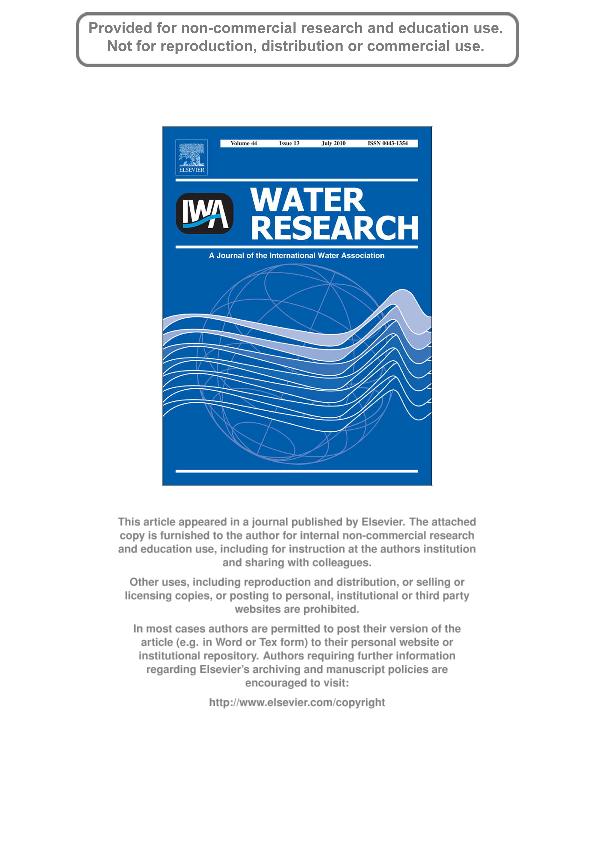Artículo
Glyphosate degradation in water employing the H2O2/UVC process
Manassero, Agustina ; Passalia, Claudio
; Passalia, Claudio ; Negro, Antonio Carlos
; Negro, Antonio Carlos ; Cassano, Alberto Enrique
; Cassano, Alberto Enrique ; Zalazar, Cristina Susana
; Zalazar, Cristina Susana
 ; Passalia, Claudio
; Passalia, Claudio ; Negro, Antonio Carlos
; Negro, Antonio Carlos ; Cassano, Alberto Enrique
; Cassano, Alberto Enrique ; Zalazar, Cristina Susana
; Zalazar, Cristina Susana
Fecha de publicación:
05/2010
Editorial:
Pergamon-elsevier Science Ltd
Revista:
Water Research
ISSN:
0043-1354
Idioma:
Inglés
Tipo de recurso:
Artículo publicado
Clasificación temática:
Resumen
Glyphosate is the organophosphate herbicide most widely used in the world. Any form of spill or discharge, even if unintentional, can be transferred to the water due to its high solubility. The combination of hydrogen peroxide and UV radiation could be a suitable option to decrease glyphosate concentration to acceptable limits. In this work, the effects of initial pH, hydrogen peroxide initial concentration, and incident radiation in glyphosate degradation were studied. The experimental device was a cylinder irradiated with two tubular, germicidal lamps. Conversion of glyphosate increases significantly from pH = 3-7. From this value on, the increase becomes much less noticeable. The reaction rate depends on the initial herbicide concentration and has an optimum plateau of a hydrogen peroxide to glyphosate molar concentration ratio between 7 and 19. The expected non linear dependence on the irradiation rate was observed. The identification of critical reaction intermediaries, and the quantification of the main end products were possible and it led to propose a plausible degradation path. The achieved quantification of the mineralization extent is a positive indicator for the possible application of a rather simple technology for an in situ solution for some of the problems derived from the intensive use of glyphosate.
Palabras clave:
Glyphosate
,
Uv/H2o2 Process
,
Degradation
,
Reaction Path
Archivos asociados
Licencia
Identificadores
Colecciones
Articulos(INTEC)
Articulos de INST.DE DES.TECNOL.PARA LA IND.QUIMICA (I)
Articulos de INST.DE DES.TECNOL.PARA LA IND.QUIMICA (I)
Citación
Manassero, Agustina; Passalia, Claudio; Negro, Antonio Carlos; Cassano, Alberto Enrique; Zalazar, Cristina Susana; Glyphosate degradation in water employing the H2O2/UVC process; Pergamon-elsevier Science Ltd; Water Research; 44; 5-2010; 3875-3882
Compartir
Altmétricas



